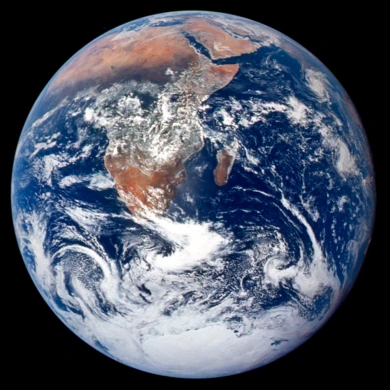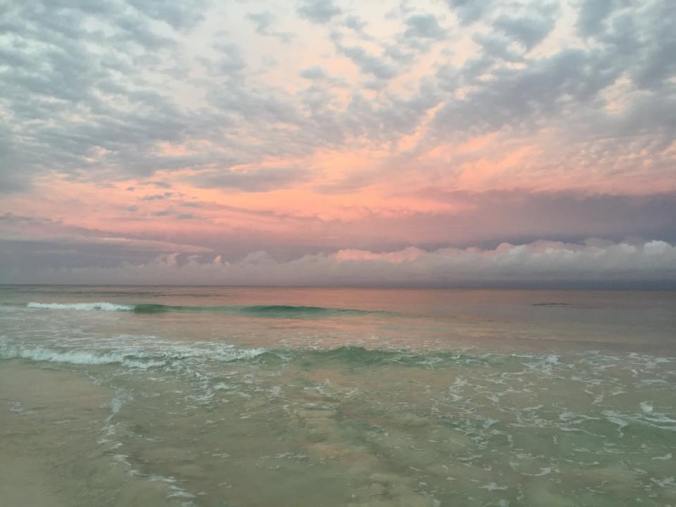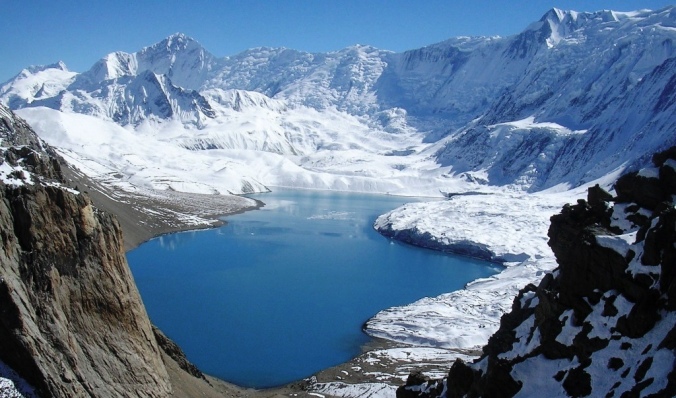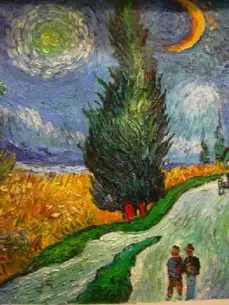This is my final message at First United Methodist Church in Mesquite, TX, and also my final message as a full time pastor in the United Methodist Church. It was presented on June 11, 2017. It is longer than my “normal” message. And it is also important- to me anyway- that others know I write these messages to be spoken. Thus, fragment sentences abound.
It is specific in many parts, I’ve used some pseudonyms when it might matter, and within it is the essence of what I want people to know about themselves and God. This is my last best shot :). I like it.
Love God, Love Neighbor, Serve Your Community
Today will be a day full of hesitations. You know that, I know that. So while I am going to be specific about some memories and hopes, I am also going to be underlining it all with a larger lesson, or call it a set of ideas, that are as much for myself as they are for you.
We often feel sadness when things change, when things don’t stay the same as we had gotten used to them being. Sadness is a natural emotion- Jesus wept!- and grief itself, the grieving process we all experience, is a necessary experience, even a healing experience that carries us through difficult times and into new chapters of life.
There is a reality that we don’t talk much about, and that I think we should talk about more, and that is the reality of impermanence; the reality that has operated in the universe since Big Bang moment #1: Nothing that has shape and form is permanent. Nothing. It is all a product of what came before and part of what will come after. People, mountains, galaxies, pets, leftovers in the refrigerator; months, minutes, decades, lifetimes..they all have beginnings and ends, but they also all contain within themselves…the possibilities of transformation.
Nothing stays the same, not even for a moment. We may go rafting on the Guadalupe River one weekend when we’re young, then go back there 15 years later with little children in tow. We step into the river but rarely give a thought to the fact that this is not the same river we experienced years ago. Not a single drop of it is the same! In fact, from the moment we stepped into it just now, it has already become something new. It appears the same, but it is not.
And neither are we. Tick, tick, tick..we are older, the trees around us are oh-so-slightly larger even within a minute of time, but much larger than we remember them fifteen years before. The children with us on this rafting trip are their own little river, too, flowing toward junior high, college maybe, or families of their own.
Because nothing is permanent, the opportunities for transformation make everything to come possible. That’s the extraordinarily positive aspect of impermanence! If the white flowers on trees of springtime stayed flowers, we would never have apples. If the little girl playing in the water’s edge with a neon green plastic inner tube wasn’t, even right now, becoming a woman, there would be no grandchildren! And on and on, play with this idea all day, because it is fun to imagine the changes that are happening around us even as we can’t see them happening!
Impermanence really is to be celebrated! There are rough spots- absolutely!- but “Behold! All things are made new.” New may be a little bit or a lot scary, but New can, with intent and hope, lead to even greater chapters of life.
Nothing stays the same. Sometimes we might have to force ourselves to say “hallelelujah” about that, but because things change, and because we can participate intentionally in that change there can be many spontaneous “hallelujahs” on the way.

Impermanence also, though, brings up another reality: This is a sunflower. So that we may categorize it, talk about it distinctly from roses or pansies, we call it that- a sunflower. But it has no real self-identity of its own. If it could talk, it might call out, “I am a sunflower!” or, if it was growing in Mexico, “Soy un girasol!”
But let’s look deeper. This flower manifested from a seed, and will one day have run it’s course, and return to the soil from which it rose. That soil, part of which was formed eons ago at the bottom of the ocean which covered this part of Texas, part of which was our kitchen scraps become compost three years ago, part of which are the “leavings” (we’ll call them) of tens of thousands of nematodes, roly-polys, and earthworms, and that soil- part of which are the millions of times recycled bits of exploded stars.
And that seed would not have transformed into a flower without the daily capture of photons beamed by the sun, and the movement of cold air across Canada clashing with warm air off the Gulf resulting in rain. This is literally part of the sun, just as it is part of billions years old starstuff and banana peels and coffee grounds from our kitchen, just as it is part of the Indian Ocean and Lake Erie.
We call this a sunflower, but it is a particular and unique manifestation of a cooperative collusion of the soil, sun, rain, and a little bit of messing around in the dirt by me, made possible by seeds from the hardware store here, and the growers, packagers, and shippers of seeds..somewhere. Not to mention the trucks which brought them to the store or the oil riggers pumping oil so the truck could get here. And on and on and on and on and on..
Nothing stays the same and everything is connecting in an endless relationship to everything else.
And that is true of you and me as well. We, too, like the sunflower, like the beautiful old cedars in front here, like the Tropical milkweed in the flower beds outside and the Monarchs which will be fluttering around them in the fall, like them..we too are a God-indwelling mysterious and wonderful manifestation of soil, sun, and water.
But because we are human, with a consciousness- memory, emotions, the ability to imagine- we are connected to one another in ways that make it impossible to claim an identity that is solely our own. No matter how unique we may be, and each of us is, we are nonetheless, each of us, whole communities of people, directly related to other whole communities.
As a way of thanking, remembering, honoring all the people in all three churches I’ve been a part of, I want to describe a few members of the community that is standing and talking to you right now. Every time you’ve heard me speak, personally or from this place which I am honored to stand in, each time..you’ve heard a chorus of hundreds of people. This is my thanksgiving for these people, and the many more not named today who are part- an important part- of me.
Last Saturday, I was presented with this painting from you, painted by Lois Dandridge:
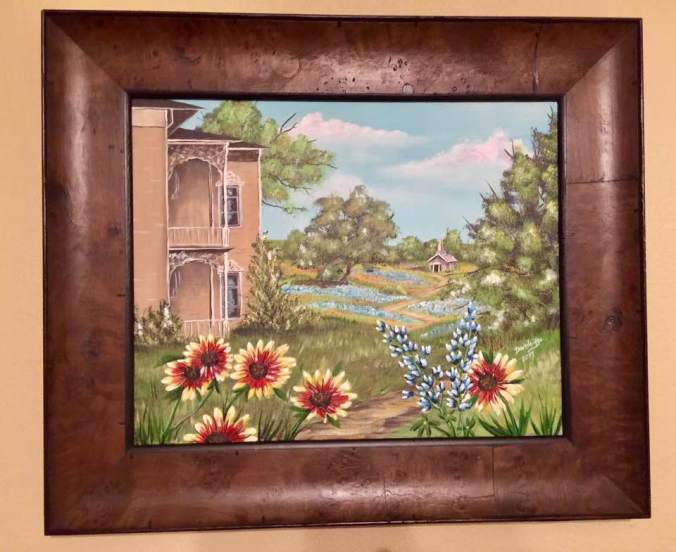
The house was so full of history, built in 1880 from oak and walnut milled within a hundred yards of where the house was built. It was a part of the young life of Harvey Firestone, the tire and rubber man when he would visit his aunt and uncle’s family there, just a 2 mile walk through the woods from his own boyhood home. And- I liked to fantasize- maybe visited by Tom Edison and Henry Ford and the poet John Burroughs when they and Firestone would go on their summer camping trips together in the teens and ‘20s.
It was Italianate in architecture which was the preferred design of wealthy people in the 1880s. The man who built it raised race horses, there was a half mile track just across the road where my brother and I and countless neighbor kids learned to drive.
Later, when our family lived there, the yard, because it was big, and because the rooms inside were big, the house was often the gathering place for family events. There were many aunts and uncles, almost 50 cousins and second cousins..and there were so many family church gatherings, painters who would set up in the field across the road to paint the house, rabbits and chickens and ducks my brother Denny and I raised, baseball and football games in front of the barn nearby..
I loved that house. When it burned down 3 years ago I wrote a lot about it, talked to you about it here. That house didn’t birth me, but the people inside and around it did, in all kinds of ways. I loved that house and that is why the painting begins there.
The path. There’s a path beyond the house. It zigs and zags. It zigs to South Dakota where I met Robbie. She and I were VISTA volunteers. Our three children were born there. And now four grandchildren have some of their roots in South Dakota, too.
It was also where we met and knew Etta, who I have talked to you about before. Etta was everyone’s grandmother, a member of the Sisseton-Wahpeton Lakota nation, a woman who had lived through terrible tragedies during a forced federal relocation in her teens to urban Chicago, but she returned to SD, met John, a man 40 years her senior, who demonstrated the love of God to her and saved her life. Which she then spent doing for others for the rest of her life. Her unflinching willingness to serve others, others who many would run from, serves as a standard in my life I someday hope to achieve.
Another bend in the road is AA.
The wildflowers in the painting, more about that in awhile. I will tell you that this was Lois’ first attempt at bluebonnets, in honor of Inez Wallace. Lois, Inez would be pleased, and I am, too.
Do notice that there is a “beyond the church” in the painting, too!
The church represents those several churches where I have served, and been served.
The churches:
Richland/Cornerstone
As I sat down to sort through thoughts about each church, I wrote down names as quickly as they came to mind. These people formed me for the next years of ministry and life. I’m using pseudonyms, in most cases.
Sherry was a young wife, newly pregnant, when her husband was killed in a terrible auto accident. I received the call from a friend of hers, calling on her family’s behalf. I was in Arkansas at the time at my sister-in-law’s home, whose husband had died two weeks before, which was just two weeks after my own dad had died. I was already pretty deeply grieving myself but when I finally got to be with Sherry two days later, I realized I had never ever fathomed such grief as deep as hers.
She asked the question, “Why, God, why?” in all the ways it could be asked. I learned immediately and quickly from her that for some questions, maybe many questions, there are no answers, but only presence. So I stayed present, though my own heart, as were all the hearts around her, was breaking.
The Walnut House/Ability House People: Mario, Josie and Charles, Vera among others. Walnut House was a home for mentally challenged men. Ability House was a home for severely physically challenged men and women. They had been turned from attending other churches in the areas, and if I tell you why I will get angry again and I can’t today. I won’t. But the people of Richland/Cornerstone embraced them- welcomed, loved them.
Josie and Charles were both elderly, confined to wheelchairs by severe cerebral palsy, and neither could intelligibly speak. The church had volunteer chair pushers, aged 7 -70 themselves. All wheelchairs were wheeled up front, where Josie and Charles, boyfriend and girlfriend, would hold hands during church, their otherwise always moving bodies calm as they did so.
Vera would clutch her little cloth doll and holler out in happiness when we sang, even, sometimes, during songs like ‘Silent Night.’ It was the sound of angels.
Mario was a character. Friendly, enthusiastic, a loud singer of songs he couldn’t read- sometimes holding his hymnal sideways or upside down. His sponsors/friends in church were also aware that Mario was an inappropriate toucher- innocent but inappropriate. The solution was to simply or quietly trade places with those being touched. A man would sit where a woman or girl had been. He’d put his arm around Mario. People chose not to be afraid of Mario, but to love him. And they did.
There are so many more, but there is a celebration dinner after this today and I don’t want a bunch of caterers getting mad at me, so..
Jacksboro
Small towns are challenging in different ways than urban settings. First, everybody is somebody’s cousin. What happens on the east side of town will be known within seconds on the west side. Many people even have police scanners so they can know even more quickly what they believe they need to know. It is difficult for some free spirits to feel free in a town where everyone’s eyes are watching.
On the other hand, there is a magnificence in small towns that many urban dwellers will never have the chance to experience.
In 2005, Kerri died, in an auto accident. In 2008, Mitch died of a long and difficult illness in NYC where he’d moved the previous year after growing up in Jacksboro. On both occasions, I experienced why people love their little hometowns. The town literally folded itself around the families of Kerri and Mitch in their times of pain. The town carried them, shared their deep grief, served them and simply and profoundly loved them. More about those experiences later, but that happens again and again in small town America, and my God I am grateful for the eight years we were there.
Another reason, and I experienced this many times but I’m going to let Bunk tell this story. Bunk was married to our church’s long time office manager, and Bunk was cowboy through and through. A clean brushed Stetson on Sundays with a white shirt and starched jeans, and all the rest of the week a sweat-soaked straw hat and boots with real, worn spurs. When Bunk was in his truck, hauling feed or busy on one of the thousand things ranchers have to do every week, he had his three dogs in the trucks with him. Cattle dogs- they worked for Bunk but they were also his friends.
I was at his mother’s house one day, his family’s ranch just at the edge of town. As I was pulling out of her driveway, Bunk drove in, so I stopped the car, but didn’t turn off the engine, and got out to walk over to where he was to say “hi.”
Bunk was a man of not many words, but I somehow hit the right question that day. Standing by a fence, I pointed west and asked simply how far their ranch extended that way. There was a reason I was asking but it became so secondary to the story I heard that I forget what the reason was.
Bunk pointed to a hill on the horizon I could barely see. “There,” he said. But then he asked me to look part way down that hill where there were a couple mesquite trees, “just a little to the left there. That where I buried my first pony. I was nine.”
And for the next 20-25 minutes I listened to this man of few words talk about that pony, his dad’s bringing that pony home one day, how he rode with his dad and others on their horses while he was on that pony, then how the pony was injured or sick, I don’t remember..and died. There were tears in Bunk’s eyes at that point and I looked away because I didn’t want him to know I’d seen them.
And my car was still running, and it was low on gas, but I literally thought, I’d rather walk home than miss any part of this story of Bunk and his pony.
I learned something- a revelation, actually, about attachment to the land- about love for dirt and cactus and rain and grass and cattle and trees and..ponies and dads. And that this is why people do whatever they need to do to stay on their land, despite heat, droughts, rattlesnakes, low prices for beef, high prices for feed, taxes..they stay because they are in love with where they’re standing.
I wouldn’t have known about Bunk and that pony if I hadn’t been in Jacksboro. Hallelujah for him and these people of the land.
Mesquite
I’m not going to be specific here- so don’t worry! But what a perfect place to be in America in this part of the early 21st century.
Mesquite is a microcosm of a changing America. Economically, demographically, politically, Mesquite has changed- I know it feels rapidly- from what it was and what many hoped it always would be, to what it is still becoming.
When I told my kids six years ago that I was being sent here, they all said, in their various ways, “Uh-oh.” You already know the kind of reputation- rather, stereotype- that had formed around this part of Dallas: this was the beginning of East Texas, in many peoples’ minds. Unfairly or (let’s be honest) at least a little bit fairly, Mesquite was known as a little red around the collar. A rodeo on the west side and a dirt track on the east side were like bookends to some people’s preconceived notions of Mesquite.
What I found though, spoke a different story very loudly. You’ve been a congregation open to change. You haven’t built walls against change, you’ve opened doors to encourage it. You’re willing to try, anxious to welcome, and you’ve supported the best childcare facility in Mesquite, which is daily rainbow of languages, colors, and culture.
That’s no small thing.
And neither is the note-burning celebration that is happening after church today. Heavy debt is squashing many churches in America right now, where old debt meets new demographics. One million dollars in six years! And all I did was watch it happen under the leadership of great people leading generous, sacrificing people.
I could be leaving here as many pastors have had to leave churches because the doors behind them were being shut by red ink. That would be an awful thing to have to do. But it’s also a circumstance I will never have to wake up at night regretting.
Thank you for that! And I get to see someone coming to lead here as pastor who is exactly the right person for this time in FUMC’s first years of a second sesquicentennial. Pastor Tom brings a skill set and familiarity with Mesquite that is unmatched in the history of Methodist pastors in Mesquite.
He is not me, and for that I say “Hallelujah!” Tom is exactly the right person for right now.
Wound through all of these names, events, churches, and communities is a “scarlet thread” as Dr. Criswell at downtown First Baptist used to call it. It’s the “tie that binds,” as the hymn names it.
But those are things, descriptive metaphors for something which will never be satisfactorily described. I choose to think of that which connects us, forms us, melts us, molds us, shapes us as something a 14th century Christian mystic called the “Cloud of Unknowing.” He talked about it it as the “hidden longing for love offered by pure Spirit.”
The Spirit is often defined for us by others, or by creedal statements. But words actually detract from it I think. Anything we say about Spirit leaves much unsaid, unable to be said. The writer, who was anonymous, called it the Cloud of Unknowing, because it always begs for further study, more exploration. It kindles our curiosity, it helps realize the enormity and depth of the message and demonstration of that message that Jesus lived and died for:
God (the Spirit) is love.
God is love.
We can never get to a complete answer of what that means. But when we respond in whatever way we respond, however the invitation comes to us..when we respond to Jesus saying, “Follow me,” we begin to get glimpses of what “God is love” really means, how it affects the world and people around us, and how it can transform our lives.
It nebulous, and sometimes hard to see clear and defined edges of this God-love reality. It is like a cloud, a cloud that encompasses everything, while still being mysterious, unable to be known fully. The Cloud of Unknowing..that’s God’s love.
But, accept that invitation of Jesus, and you begin to see evidence of it wherever you are. Sometimes it comes at you in rapidfire so overwhelmingly that you must retreat or be overwhelmed. Sometimes you have to search for it, but it can always, always, be found. Because God is love, and we are in that cloud and, if we can look beyond those important but limiting doctrines and creeds , we can live lives amazed all the time in God’s presence.
Sometimes it’s easy to see. I would be standing in the pulpit in Garland, and look down and see Charles and Josie, their bodies calm as they held on to each other, hand in hand, wheelchairs side by side. And just because love is easy to see sometimes does not make it any less profound.
I experienced that love in Sherry’s painful, most painful questions, “Why did God let this happen?” Because love isn’t only about hearts and flowers; love- God’s love- is often about having the courage of love to say out loud the ragged, jagged things we must say, must ask, but too often stifle.
I experienced that God-love, after the memorial services of Kerri and Mitch- young, loved and lovely people, in 2005 and 2008, when I was intercepted both times by a local pastor who I probably disagree with on almost every point of Christian theology, who somehow knew to come to that part of the church building where I would go to be alone, and said he just needed to cry with someone. And I immediately knew that he knew that I did too. So we did.
I said it was a cloud of unknowing, and it is, but I found myself so often immersed in that God-love in ways I had never before experienced in the pastures and lakesides at Jacksboro. I would sit at my “outside office” there which was a concrete picnic table on a bluff beside the beautiful Jacksboro lake and watch vultures teaching their chicken-sized chicks how to fly, or see four/five lb. bass break the surface of the lake in a silver comma as they were attracted by a fluttering above them and grabbed low-flying dragon flies.
That bond that permeates all of Creation- instinctual and dramatic. That attraction is also a foundational characteristic of God- Love causes Creation to be.
And the wildflowers there- the painted prairies of spring and summer. Yellows first and then the blues, bluebonnets and bluebells, then the firewheels and winecups and primroses. Then yellows again, sunflowers, Mexican hats, profuse, thick, acres and acres of them. Untended by any human, sometimes the seeds lay idle for years waiting for just the right amounts of April rains and May sun. Then there would be an overnight explosion of magentas and reds, purple thistles and white daisies, pink bee balm and all colors of milkweed.
Beyond the flowers, acres and acres of saw grass, prairie grass, green oceans in the summer and amber waves in the fall.
Beauty reveals that God-love too. Jesus saw it..in the flowers, the birds, the fig trees, and the morning sky.
Those are all forms of life that loudly affirm that inter-relatedness of all things. The vultures, the fish, the dragonflies. The thistles, the grass, the summer storms..I knew why St.Francis wrote of Brother Sun, Sister Moon, Sister Water, Brother Fire, Mother Earth. Because those are relationships, relationships we are as dependent on as the mother and father who birthed us. Relationship, attraction, love. God is love, and it is beautiful.
Within the Cloud of Unknowing, within the mysterious, binding, encompassing love of God in all of its physical, natural, and human forms, we- the human part of that whole God-Imaged equation- have an extraordinary role to play: we are to be co-creators with God of the kingdom of heaven on earth. We acknowledge that responsibility every time we pray “May your kingdom come, may your will be done on earth as it is in heaven.” That’s part of the prayer Jesus taught his disciples to pray because that role of being God’s hands, heart, and love on earth was the role Jesus was called to call us to. He not only calls us to that role of being fully human, but then he showed how to do it.
- You do it by going to the the lepers and touching them. You make your feet move to where your God-loving heart has already told you you need to be. You move toward the pain of others.
- You co-create with God by being willing to do whatever it takes- money, time, convenience- to make something else in God’s creation better. You give whatever you can, do whatever you can, sacrifice however you can because the one who invited you into this kingdom gave, did, and sacrificed everything. And..
- You build the kingdom of God with- WITH- other people. You make casseroles, you serve meals, you have the grace to let others serve you. You eat with sinners, you go fishing with friends, you put on a feast and invite everybody in town, and when you run out of wine it doesn’t matter, because when you gather in the name of Jesus, the best is always what comes last.
To paraphrase John Wesley, who was condensing everything he could say about following Jesus:
Where there is need, do good, all you can. Do all the good you can. Where there is evil, resist. Resist. Big evil, little evil, doesn’t matter. Resist.
My final advice:
- Watch for the “little Christs”- Yogi with green beans, teachers reaching into their own purses and pockets for kids who have no purses or pockets, people going down to Florence Black elementary to read with kids in the language of love and hope. Follow those little Christs on the way to Jesus.
- Be aware of Beauty. Learn to paint bluebonnets. Go the Dallas Museum of Art, or the Kimball..what great collections they have. Give your mind to the moon once a month or so. And don’t just look at these things, “Consider them,” Jesus said. Linger. Capture the sun in all the places you can, around your yard. Plant trees in the shade of which you will never rest.
- Encourage. Encourage each other. Not with platitudes, but with real hope. Encourage strangers with compliments they’re not expecting but maybe need that day more than they need food or water. Encourage those with whom you disagree- there is always common-ground. Let it be your personal quest to find it. Encourage children, young people. You remember those adults who encouraged you, and they will, too.
Now, finally, this. My favorite scripture, my favorite 2 verses of the Bible, Rev 22:1,2-
22 ‘Then the angel showed me the river of the water of life, bright as crystal, flowing from the throne of God and of the Lamb 2 through the middle of the street of the city. On either side of the river is the tree of life with its twelve kinds of fruit, producing its fruit each month; and the leaves of the tree are for the healing of the nations.’
The scripture is itself like a painting, a metaphor for the the Godness, the goodness around us. The river is flowing, always flowing, with new life, new possibilities, new hope.
As the Bible began with a Tree, the tree of the knowledge of good and evil- our human consciousness- the Bible now ends with a Tree: Christ- our human hope. That tree straddles the river, it is the beginning and end of our individual and collective journeys on this planet, and it is common to every living being on this planet.
And it bears fruit. Many different kinds of fruit, too, because that fruit is us- we are God’s forgiveness, grace, and acceptance on earth, we are the invitation and welcome of Jesus the Christ, and we are the courage and the compassion of the Spirit living our lives in community with others.
As the leaves fall from the tree, and all leaves eventually do, they are our legacy, our lasting mark on all that comes after us. The river of life carries our legacy into oceans of the future, waters of life from which other generations will drink the Living Waters.
To the communities of my journey- Columbiana, Ohio, the people of South Dakota, especially the Sisseton Wahpeton, the brothers and sisters in the Texas Dept. of Corrections..to the people of Cornerstone, Jacksboro, and to you here today, Mesquite, I say ‘Thank you,’ and
I love you.
But way way way more than that..
God loves you.
Amen
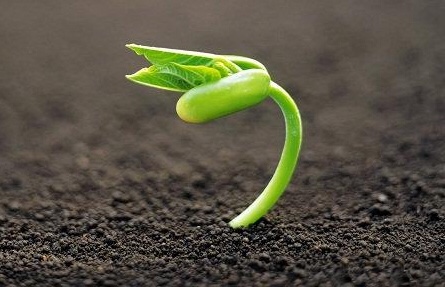
 “Dog!” he says, and we can only imagine the murmured agreement from others who had just witnessed this woman.
“Dog!” he says, and we can only imagine the murmured agreement from others who had just witnessed this woman.

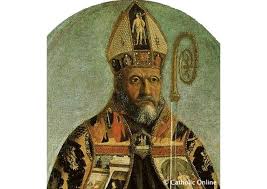 One example: Augustine, a “Church father” of the fourth century CE, wrestled most of his life with a very active libido. His mother convinced him that such behavior was bad, so Augustine set about finding the biblical reasons that it was bad, so that he could (hopefully) tame those urges within himself.
One example: Augustine, a “Church father” of the fourth century CE, wrestled most of his life with a very active libido. His mother convinced him that such behavior was bad, so Augustine set about finding the biblical reasons that it was bad, so that he could (hopefully) tame those urges within himself.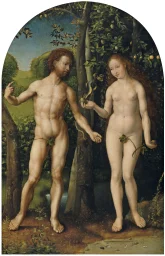 Having done so, Adam’s and Eve’s “eyes were opened” exactly as the temptor devil-serpent had told them they would be opened when it was urging them to go against God and bite the fruit. And when their eyes were opened they saw something neither Adam nor Eve had ever noticed before in their days-old lives: the other person’s genitals.
Having done so, Adam’s and Eve’s “eyes were opened” exactly as the temptor devil-serpent had told them they would be opened when it was urging them to go against God and bite the fruit. And when their eyes were opened they saw something neither Adam nor Eve had ever noticed before in their days-old lives: the other person’s genitals.

